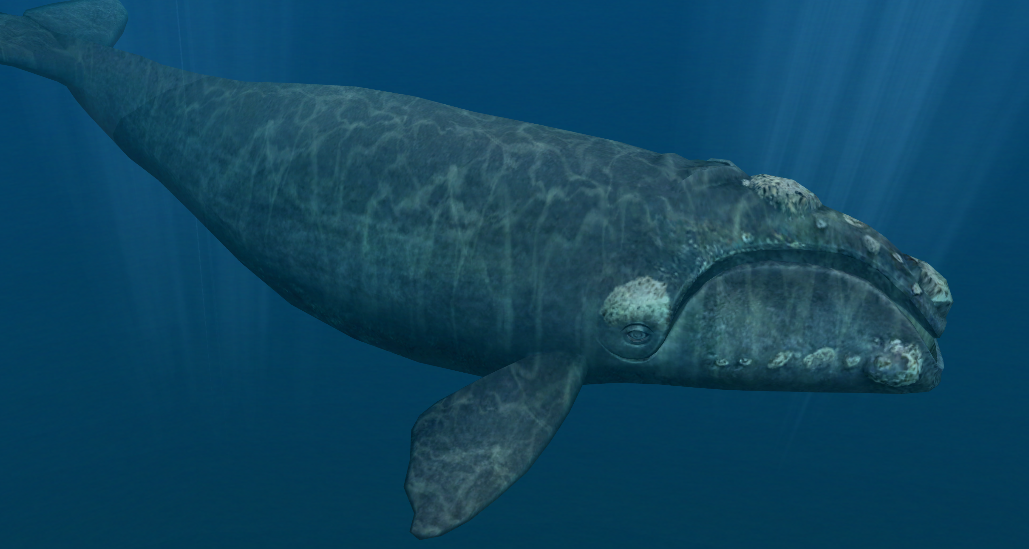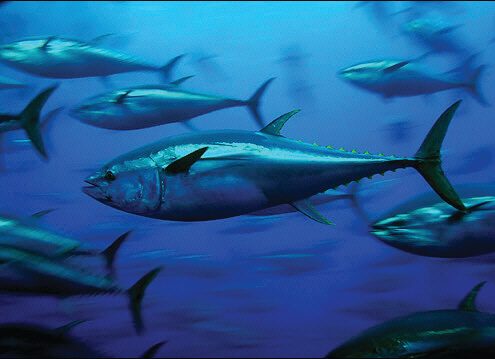
North Atlantic Right Whale
Endangered
North Atlantic right Whales (Eubalaena glacialis) are the most vulnerable of all right whales which are categorized into three species- North Atlantic, North Pacific, and Southern, all of which are endangered. Scientists estimate that there are only about 450 North Atlantic right whales left. They have been hunted for their oil and baleen for decades. Ship strikes and entanglement with fishing gear are their primary threats. New regulations on shipping in New England (speed limits and recommended routes) are helping the species in their recovery.

Atlantic Bluefin Tuna
Critically Endangered
The Atlantic bluefin tuna (Thunnus thynnus) are the largest tunas, averaging at 6-10 feet and 1500lbs, and can live up to 40 years. They migrate across all oceans and can dive deeper than 3,000 feet. Bluefin tuna are made for speed: built like torpedoes, have retractable fins and their eyes are set flush to their body. Their biggest threat is overfishing for the high-grade sushi markets in Japan and are sold at high price tags all over the world.

Monk Seal
Critically Endangered
The Hawaiian monk seal (Neomonachus schauinslandi) is native to Hawai´i – living mostly in the Northwestern Hawaiian Islands and occasionally among the Main Hawaiian Islands – and can’t be found anywhere else in the world. Monk seals are about 7 feet long and can weigh about 600lbs, their total population is estimated at 1,400. Challenges such as shark predation, food shortages, habitat loss, and entanglement in ocean trash, threaten Hawaiian monk seals.

Loggerhead Sea Turtle
Endangered
The loggerhead sea turtle (Caretta caretta) are named for their relatively large heads, which support powerful jaws and weigh an average of 250 pounds and are generally about 3 feet long. In the Atlantic Ocean they live anywhere from Argentina to Nova Scotia. They are most threatened by habitat loss and degradation as well as entanglement in fishing gear and illegal trading of eggs, meat, and shells.